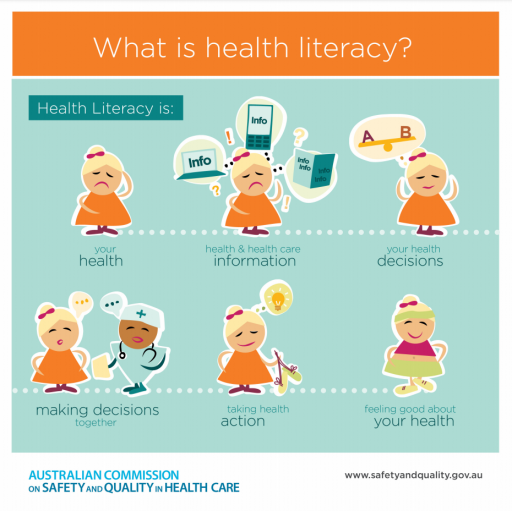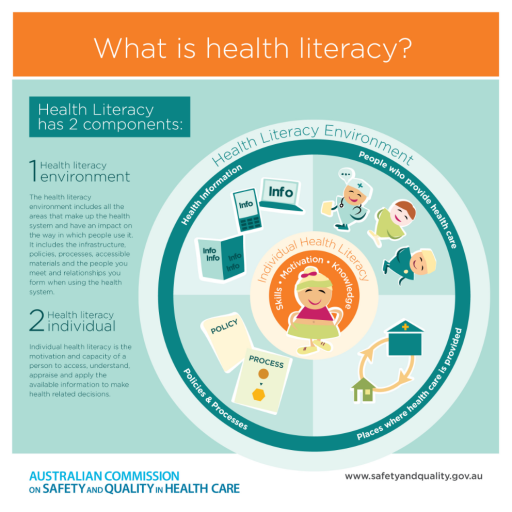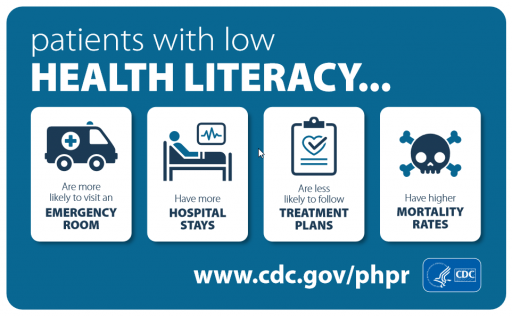Plain Lay Language & Health Literacy
What is Plain Lay Language? Why is it important?
Plain Lay Language 1(Other synonymous: Layman’s, lay friendly, plain writing) is an inclusive writing style, with its own defined structure and rules, which uses non-technical terms in order to share information in a simplified manner, oriented towards a lay non-scientist audience who lacks the academical/technical background in the field. A video created by Editors Canada presents explains ”What is Plain Language?”.
In Science Communication, Plain Lay Language is very important for it allows scientific researchers and physicians studying Congenital Diseases of Glycosylation (CDGs) to share their findings with a wider crowd, spreading awareness through academic and lay circles while educating people to the challenges faced by the CDG community and the current scientific progress. Watch the video below championed by the University of Melbourne explains “Plain language in research communications”.
In a healthcare context, Plain Lay Language is essential to assure that healthcare professionals communicate clearly with patients, families and the general crowd, whether it’s in a routine medical appointment or in a clinical trial summary. When doctors make the effort to communicate in a simplified manner, patients feel validated and have a better understanding of their clinical situation, therefore, they’ll be more likely to cooperate while being treated and be more trusting, leading to improved doctor–patient relations.
In recent years, people living with rare diseases, professionals and patient advocates have been developing the Lay Language subject, leading to new materials, toolkits and legislation on the subject.
The following TEDx Talks entitled “Demand to Understand: How Plain Language Makes Life Simpler” by Deborah Bosley walks you through what you can do advocate for the right to receive information that is clear, concise, and credible.
Health Literacy as an outcome of Lay Language
The CDC defines health literacy as “the degree to which an individual has the capacity to obtain, communicate, process, and understand basic health information and services to make appropriate health decisions”. Check the video created by HealthAtHand.com explaining in a nutshell health literacy.
The Australian commission on safety and quality in healthcare prepared the two infographics below that illustrate the importance of health literacy and how it shapes people’s health and the safety and quality of health care.
A study by the CDC reveals that nearly half of all American adults (≈90 million people) have basic or below basic health literacy skills, leading to difficulty understanding and acting on health information. The following infographic made available by CDC shows the effects of Low health literacy.
The video below championed by the VCH Integrated Primary and Community Care initiative, shows the seven steps to improve health outcomes of people living with a certain condition.
When it comes to rare diseases such as CDG, a major challenge faced by patients and families is the lack of information and literature available in non-technical language. This makes it harder for people to understand their clinical condition, hindering the entire treatment process. In order to improve the community’s Health Literacy and, consequently, the healthcare service experience, the average lay person needs to have access to reliable information in a comprehensive format – And this is where Plain Lay Language comes in.
The following TEDx Talks entitled “Are you confused about health information? You're not alone” by Lisa Fitzpatrick walks you through the crisis of health literacy in the United States.
Factors that affect Health Literacy and Plain Language:
- Cultural, language and communication barriers, leading to misunderstandings between patients and their health care providers;
- Inclusion, Co-creation and Collaboration within stakeholders is essential: resources must be built by professionals considering patient’s point of view and opinion. This demands additional workload/skills;
- Search for Information: Medical and scientific information is hard to look for and it requires people to search in scientific databases;
- Some hesitancy in creating Plain language resources
- Lack of awareness and education towards CDG matters. Lack of scientific/health culture
Benefits of an increased Health Literacy:
- Patients feel safer and more trusting of their doctors/ healthcare staff;
- A better management of medication and treatment;
- A better understanding and awareness towards medical conditions and symptoms, which can avoid sudden disease and emergency care;
- Avoid spending unnecessary time and money – treatments and appointment are more productive, which may also translate in a much more bearable medical billing;
- Ease of accessing and using health care services and insurance benefits;
- As information reaches a wider crowd, lay people learn how they can improve their own health and give helpful feedback for medical research.
A lecture led by the Network of the National Library of Medicine entitled “Effective Health Communication and Health Literacy: Understanding the Connection” is available below.
For further reading:
- Check out here the infographic created by the Rider University
- Aveon Health prepared an explanatory infographic available here
Spotlight to Communicate health
- We ❤ Heatlh Literacy is an amazing supportive webpage devoted to share and communicate health in a simplified manner, check it out for inspiration!
- Things We ❤: Plain Language in Academic Writing here
Health literacy measures
- There’s several measures on how to improve and practice Health Literacy, you’ll find some good resources here.
- Frequently Asked Questions: Can I measure a patient’s health literacy?
Didn't find what you are looking for?
Your question may help others
Author
Salvador Magrinho Sci and Volunteer Program Nova School of Science and Technology 2021.
Disclaimer
The Site cannot and does not contain medical or health advice. The information is provided
for general informational and educational purposes only and is not a substitute for
professional advice.
Accordingly, before taking any actions based upon such information, we encourage you to
consult with the appropriate professionals. We do not provide any kind of medical or health
advice. The use or reliance of any information contained on this site is solely at your own
risk.
Follow Us
Like the World CDG Organization Facebook Page. Share the page on your own timeline, and tell your friends to share it.
Follow us on Twitter and LinkedIn.
Subscribe to our Youtube channel and invite your friends to subscribe too.




